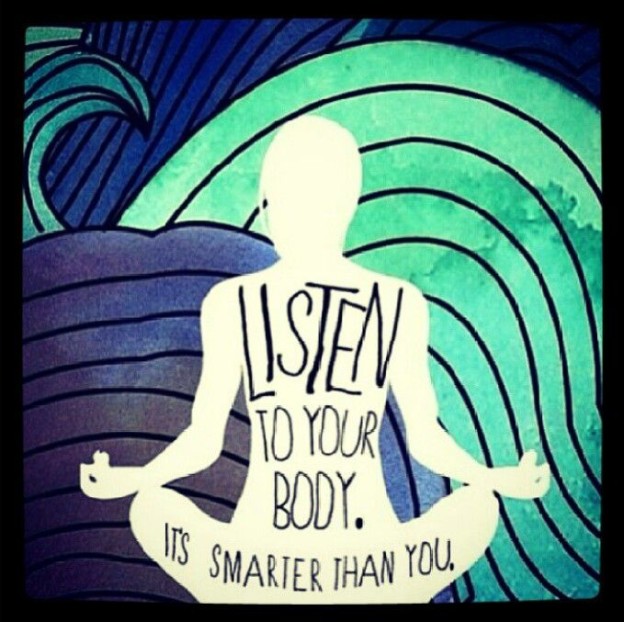The other night I was speaking to a client and he said, “You know… when you first told me this I didn’t believe you.” (Yes, I was wondering where this was going to go). “But I’ve actually started to crave vegetables!” In fact, he went to one of his favorite fried chicken spots and ordered Brussels sprouts. Not because fried chicken is “bad”, but because he actually just plain and simple wanted the veggies. Moments like this really make me gush because our bodies are really so smart. When we give them a little love and attention, they start to point us in our right direction (because everyone’s right direction is different).
There’s no one way to learn to listen to your body. It’s something that starts to happen more and more as you set the intention to listen, and as you become more aware. It can definitely help to have a coach, or guide, but it isn’t necessary. For those of you who don’t have a coach, friend or mentor and feel a little stuck about where to start when people tell you to listen to you body, here are a few tips that can get you started.
Start paying attention.
Most of us work on automatic. We push through any discomfort in an effort to get through out days. Getting off of automatic is the first step.
Be curious.
Check in with yourself and your body. Go through each body part in your mind and take a second to focus in and see how that part of you is doing. Are your feet tired or achy? Do you have a mild consistent headache? Where is the headache? In the front of your head, middle? Are your fingers tired from typing? Maybe it’s just your right hand. Is the pain or discomfort dull, diffuse, or sharp?
Start noticing how you feel before and after you eat.
Were you tired? How did you know you were hungry? Did you see something that made you salivate? Are yo bored? Start asking questions.
Keep a log.
I don’t recommend this to everyone, especially if you have a history of disordered eating, but it can be useful to just notice what you’ve eaten throughout the day. I’m not talking about weighing or measuring your food, but just taking a general glance. From there you can start recording any persistent symptoms you are trying to understand and eliminate. Maybe red peppers give you a headache. Or sugar brings out your acne. Keeping a log is a great tool to help connect the dots.
Notice what you crave and why.
Be gentle with yourself.
When we start to pay attention to our bodies cues and come off of automatic mode, we realize that there’s often been a lot of negative thinking and harsh words we’ve silently directed towards ourselves. This can be a lot to come to terms with, but is the first step towards having compassion for ourselves and making the kinds of changes our bodies are calling out for.

